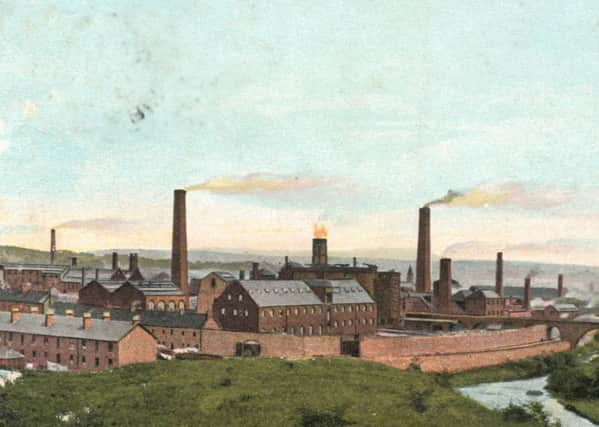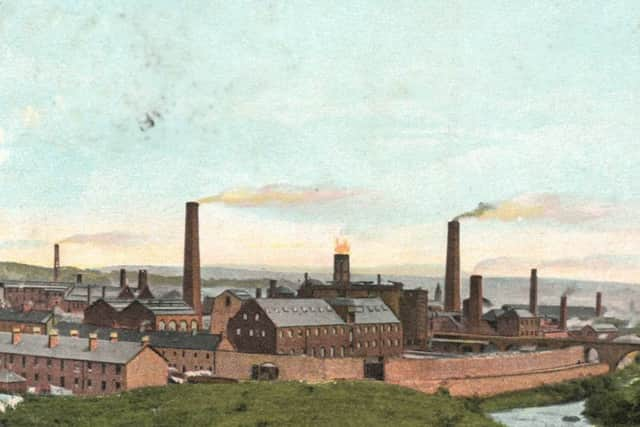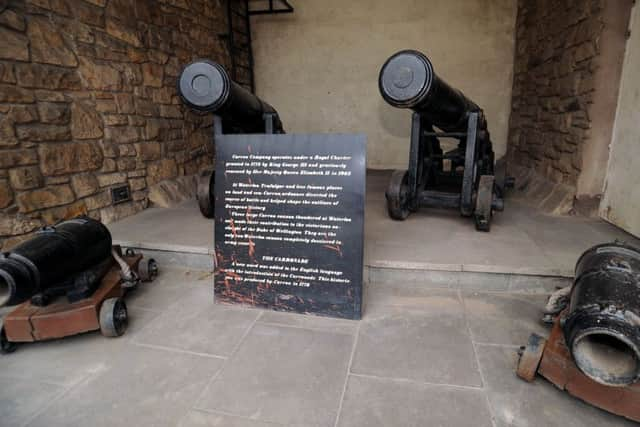VIDEO: Falkirk's most important export - the Carronade


Irn Bru was offered by one while somebody else mentioned the Roman Wall.
There were also honourable mentions for the Kelpies and the Wheel.
Advertisement
Hide AdAdvertisement
Hide AdHowever, for me, there is only one answer – the powerful weapon first cast in iron on the banks of the Carron back in 1778.


When Dr John Roebuck and his partners first planned an ironworks at Carron in 1759 their eyes were set on the lucrative market for iron cannons.
Britain was at war once again and the English iron masters could not keep up with demand so the entrepreneurs decided to fill the gap, and their pockets, at the same time.
There was one drawback – nobody had much of a clue how to make a cannon but, being practical men, they set about solving the problem.
Advertisement
Hide AdAdvertisement
Hide AdA man was sent off to Edinburgh Castle with a measuring tape and a notebook with the task of drawing and measuring what he found up on the ramparts.


Thus equipped the patternmakers and moulders were given their instructions: “Have a look at this and see what you can manage”.
Well, of course, they didn’t manage all that well and their early attempts were so poor that both the Admiralty and the Army rejected almost everything on offer.
It was a disappointing start to what would eventually bring the company such fame and fortune.
Advertisement
Hide AdAdvertisement
Hide AdThe transformation came about mainly through the efforts of one man, Charles Gascoigne, who by crafty manoeuvring had assumed control of the company from the original partners by 1772.


His early efforts to solve the problem of the guns were not much better than his predecessors but, eventually, using his contacts in England and a bit of industrial espionage he discovered the secret of accurate cannon boring. It was a turning point for soon Carron was making and selling a ‘new light constructed gun’.
Then, two years later in 1778, Gascoigne unveiled what he immodestly called the ‘Gasconade’, a new style of gun which had a short barrel and wide muzzle and would pack a mighty punch.
It was the prototype of the famous ‘carronade’ and earned its nickname ‘the smasher’ from the devastating effect of its use on wooden ships at close quarters.
Advertisement
Hide AdAdvertisement
Hide AdWithin a few years more than 600 capital ships carried carronades of various sizes and the first shots at Trafalgar came from the muzzle of a Falkirk-made gun!


The reputation of the works soared and soon Wellington’s army took the field against Napoleon with Carron guns in his artillery train.
Despite Gascoigne’s claims, the real inventor of the Carronade was the Scottish General Robert Melville who was presented with a model of the gun by the company in recognition of his contribution. It is now part of the Falkirk Museum collection.
Gascoigne didn’t stay long to enjoy his success. In 1786 he skipped off to Russia with patterns, gun metal and a few skilled gun moulders to set up a foundry for the Tsarina.
Advertisement
Hide AdAdvertisement
Hide AdHe never came back and went on to earn a fortune and high honours.
A century later when the light brigade charged the Russian guns at Balaclava they must have looked familiar because they were almost identical to those made in Carron.
Many of the guns captured then ended up in various parts of the British Empire where their Russian inscriptions still cause confusion to the finders.
Thanks to the research of the historian of Carron Company, Brian Watters, we are often able to put their minds at rest!